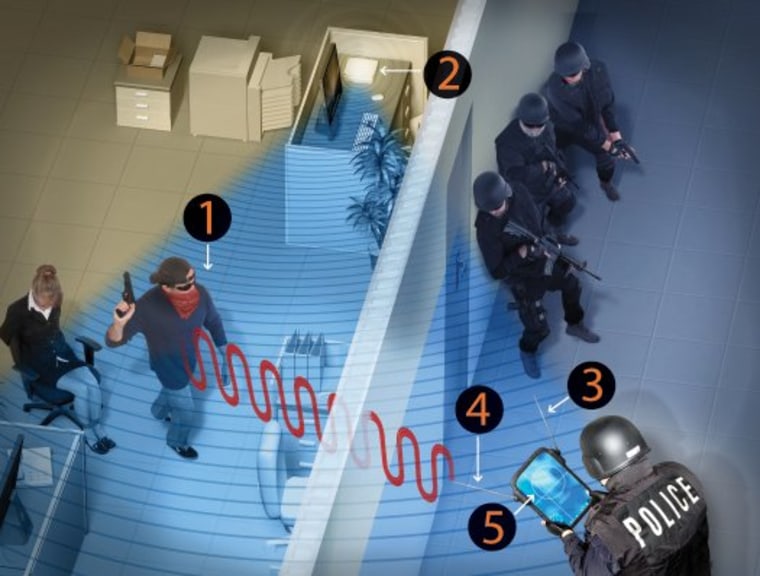The Wi-Fi radio signals found in most homes can now be used to pinpoint your movement, when they are sniffed by a system being developed by researchers in London.
Kevin Chetty of University College London's Department of Security and Crime Science performs research on what could be considered a kind of Wi-Fi radar. By detecting minute changes in the radio waves traveling through the air, the system can detect movement through a foot-thick brick wall.
The ubiquitous Wi-Fi signals being beamed out by wireless routers and laptops change their frequency very slightly when bouncing off a moving object. This example of the Doppler effect is similar to how the sound of a siren seems to go from high to low back to low as it passes by. Instead of changes in the frequency of sound waves, this is a change in the frequency of radio waves.
The system is about the size of a suitcase and doesn't emit any waves itself, meaning it can't be detected — so it's stealthier than devices that emit X-rays or another form of radiation. Its two antennas work together, one that monitors the baseline radio waves and one that looks for changes in them. The system can locate an object to within a couple feet, and can determine whether it's moving and in what direction.
If someone is standing still, though, they may as well just be furniture. For now, the system can only detect objects in motion. But another researcher on the project, Karl Woodbridge, says that it improvements could be made that could detect a person's breathing, allowing it to find stationary people. Of course, if the router turns off, the radio waves go away, and the system can't see anything.
The UK Ministry of Defence is interested, naturally, and has commissioned a study to see whether the Wi-Fi radar could be used to scan buildings before soldiers or police enter them. The paper, "Through-the-Wall Sensing of Personnel Using Passive Bistatic WiFi Radar at Standoff Distances," was published in a recent IEEE journal.
Devin Coldewey is a contributing writer for NBC News Digital. His personal website is coldewey.cc.
